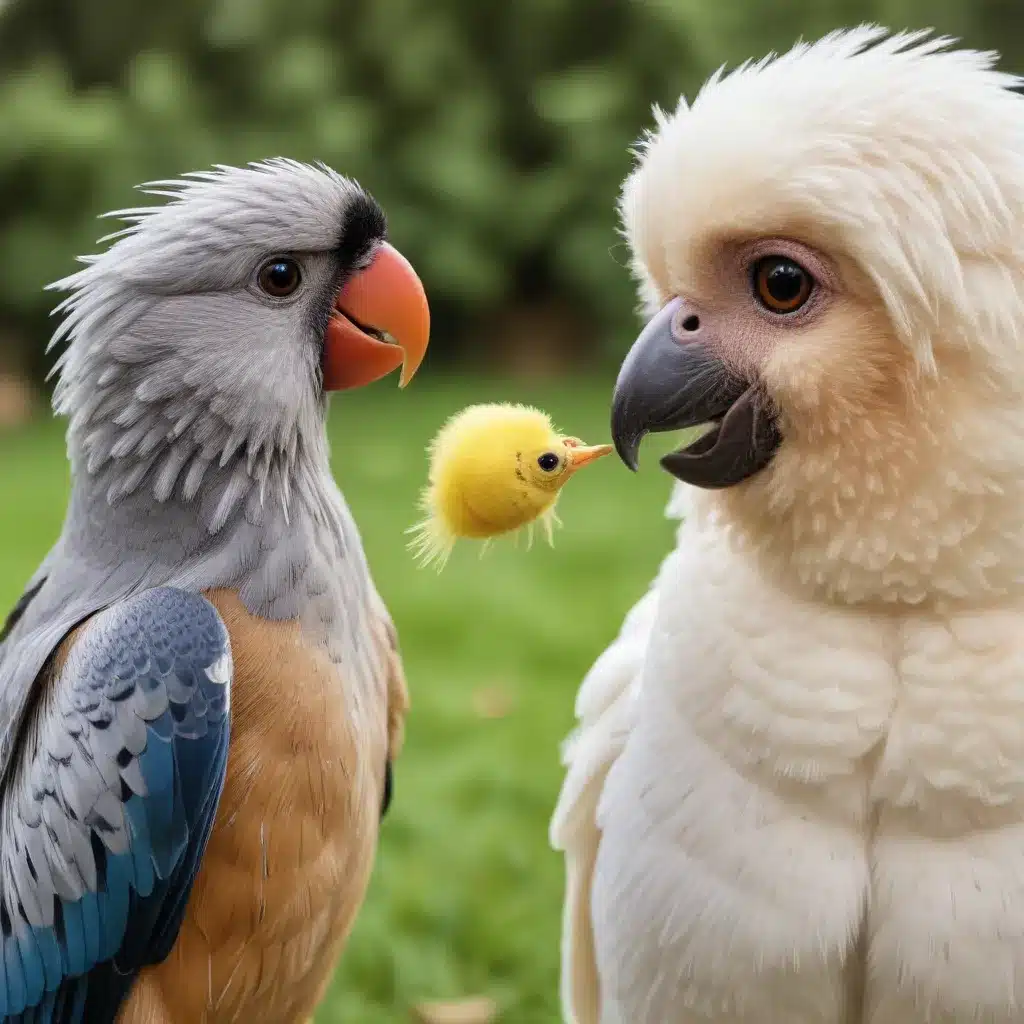
As an experienced avian caretaker and expert in the field, I’m excited to share my insights on creating a tailored training plan for your beloved bird. Whether you have a playful parrot, a curious cockatiel, or a majestic macaw, the key to successful training lies in understanding your feathered friend’s unique anatomy, physiology, and behavioral tendencies.
Avian Anatomy and Physiology
To build an effective training program, it’s essential to have a solid grasp of how a bird’s body functions. Let’s dive into the intricacies of avian anatomy and physiology.
Feather Structure and Function
Feathers are the defining feature of birds, and their intricate design plays a crucial role in a bird’s ability to fly, communicate, and regulate its temperature. Each feather is composed of a central shaft, known as the rachis, with delicate barbs and barbules that interlock to form a cohesive structure. The arrangement and condition of a bird’s feathers can provide valuable insights into its overall health and well-being.
Avian Digestive System
The avian digestive system is quite different from that of mammals. Birds have a specialized gizzard that helps grind up food, and their intestines are adapted to extract maximum nutrients from their diet. Understanding the specific dietary needs of your bird species is essential for maintaining its overall health and energy levels, which in turn supports successful training.
Avian Respiratory System
Unlike humans, birds have a highly efficient respiratory system that includes air sacs throughout their body. This unique anatomy allows for rapid oxygen intake and efficient waste removal, enabling birds to sustain the energy demands of flight and other activities. Recognizing the importance of proper breathing during training sessions can help you create a safe and comfortable environment for your feathered friend.
Avian Nutrition and Diet
Providing a balanced and species-appropriate diet is crucial for the well-being of your bird and the success of your training program. Let’s explore the essential nutritional requirements for avian species.
Macronutrient Requirements
Birds have different macronutrient needs compared to mammals. They typically require a higher percentage of protein in their diet to support muscle development and maintain overall health. Carbohydrates and fats also play important roles in providing energy and insulation, respectively.
Vitamin and Mineral Needs
Vitamins and minerals are just as essential for birds as they are for humans. Deficiencies in key nutrients can lead to a variety of health issues, which can hinder your bird’s ability to participate in training sessions. Consulting with an avian veterinarian or experienced bird breeder can help you determine the optimal supplement regimen for your feathered friend.
Hydration Considerations
Adequate hydration is paramount for birds, as they lose a significant amount of water through their respiratory system. Ensuring your bird has access to clean, fresh water at all times can help maintain its energy levels and support successful training outcomes.
Avian Behavior and Training
Understanding the natural behaviors of birds is the foundation for developing an effective training plan. Let’s explore the principles of positive reinforcement training and the various techniques you can employ.
Natural Behaviors of Birds
Birds exhibit a wide range of natural behaviors, from preening and flapping their wings to vocalizing and engaging in social interactions. Recognizing and respecting these innate tendencies is crucial for building a strong bond with your bird and designing training programs that align with its innate drives.
Positive Reinforcement Training
Positive reinforcement training is the most effective and humane approach for avian species. By rewarding desired behaviors with treats, praise, or access to preferred activities, you can gradually shape your bird’s responses and encourage the behaviors you want to see. This method fosters a trusting relationship and helps your feathered friend feel safe and confident during the training process.
Training Techniques and Tools
A variety of training techniques and tools can be utilized to create a personalized plan for your bird. From target training and clicker conditioning to the use of perches, platforms, and interactive toys, the options are vast. Experiment with different approaches to determine what resonates best with your feathered friend’s individual personality and preferences.
Personalized Training Plan Development
Now that we’ve explored the foundational aspects of avian anatomy, physiology, nutrition, and behavior, let’s dive into the process of creating a personalized training plan for your feathered companion.
Assessing Individual Needs
Every bird is unique, and it’s essential to take the time to understand your bird’s specific temperament, learning style, and behavioral tendencies. Observe your bird’s reactions to different stimuli, note its preferred activities and rewards, and consult with avian experts to gain a comprehensive understanding of your bird’s individual needs.
Goal-Setting and Progression
Once you’ve assessed your bird’s unique characteristics, it’s time to establish clear training goals. These can range from basic behaviors like stepping up and target training to more complex tricks and behaviors. Develop a step-by-step plan that allows for gradual progression, celebrating small successes along the way to keep your bird engaged and motivated.
Monitoring and Adjustments
Regularly monitoring your bird’s progress and making adjustments to the training plan as needed is crucial for long-term success. Pay attention to your bird’s body language, energy levels, and response to training sessions, and be willing to adapt your approach to ensure your feathered friend remains enthusiastic and comfortable throughout the process.
Remember, the key to a successful training plan lies in building a strong bond of trust and understanding with your bird. By tailoring your approach to their unique needs and preferences, you’ll be well on your way to developing a rewarding and enriching training experience for both you and your feathered friend. For more information and resources, be sure to visit Mika Birds Farm – your one-stop-shop for all things avian.


